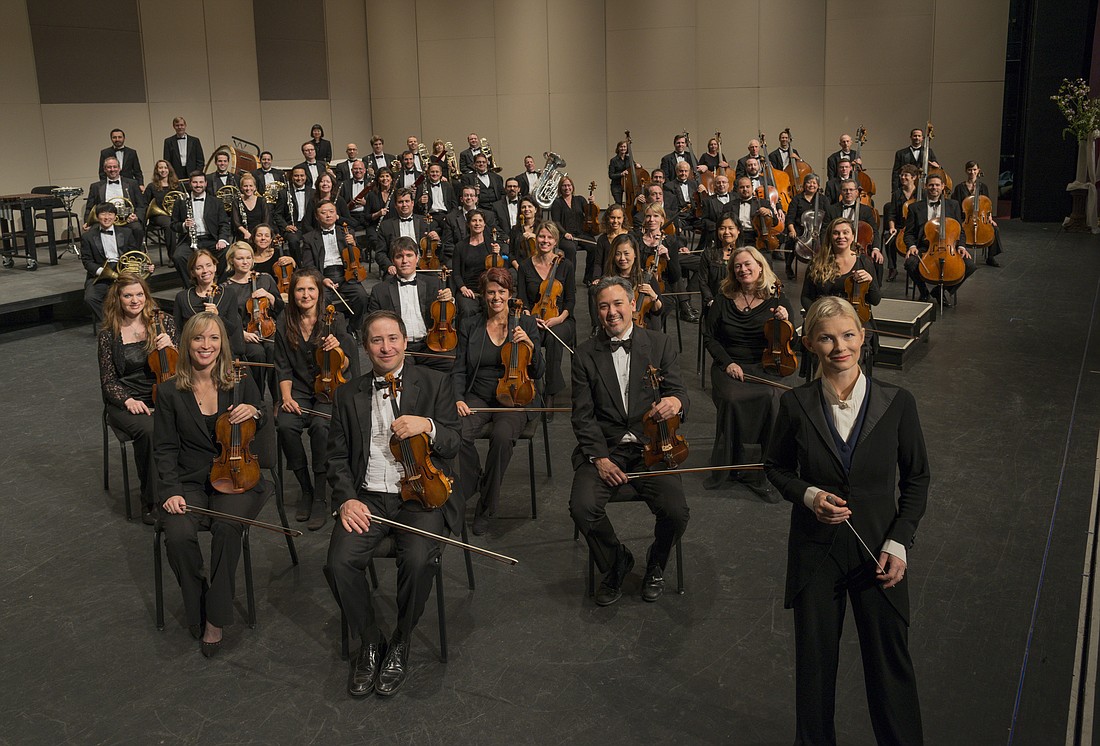- November 23, 2024
-
-
Loading

Loading

In what could almost be called a concert of modern American music, the Sarasota Orchestra ended this season’s Masterworks series in a blaze of outstanding performances.
John Corigliano’s epic Violin Concerto, “The Red Violin,” (2003) was easily the standout artistic and audience favorite Sunday afternoon at Van Wezel Performing Arts Hall at Masterworks 7. Based in part on his award-winning score for the movie, “The Red Violin,” this concerto is not only a tour-de-force for both soloist and orchestra, it is an outstanding statement of Corigliano’s talent and gifts for melody, construction and orchestration.
Corigliano’s score is at once lyrical, tonal and dissonant, yet he combines all these elements into a musical whole, forcing — yet also allowing — us to concentrate on his musical ideas and the absolute virtuosity required of the soloist. And violinist Elina Vähäla was more than ready for the composer’s challenge. Her performance was amazing and never to be forgotten. Simply put, it was magnificent.
Corigliano is a facile orchestrator, using a large orchestra to express his multitude of ideas and sounds with many musical effects: harmonics, percussive “slapsticks,” string players “col legno” (striking the strings with the wood of the bow), and downright almost ugly sounds of scraping and scratching in the opening of the fourth movement.
But certainly in this case the sum of the parts was greater than the whole, for the result was a concerto of deeply felt meaning, lovely lyricism and intense musicality that called on an active participation by the audience as well. This is not just a “sit back and listen” concerto. It is a work that demands our participation as a proactive listener, to involve ourselves, our ears and our emotions. Yes, we need to hear it more than once to feast on the musical delights Corigliano has put on our plate.
John Adams’ “Short Ride in a Fast Machine” (1986) opened the concert, and it was indeed huge and complicated, and one of many — MANY — moving parts. Adams has utilized what could be the best ideas of the minimalism of Steve Reich, Phillip Glass and a few others, and distilled it within his own musical voice. “Short Ride” is just that, a quick and hair-raising roller coaster ride of a musical experience. It starts with a click track of the wood block, then explodes into a frenzy of woodwind noodles, and we are transported into an unrelenting musical journey. I’m sure it’s as much a challenge for the orchestra (and conductor) as it is for the audience, since it’s pretty obvious that everyone on stage, as well as the audience, is careening around those corners and holding on for dear life.
And this “Short Ride” ended well. Actually it just stopped, rather than ending; abruptly perhaps, but with all passengers and players sighing and happy that “we did it again!”
A concert of “almost all American music,” but with Rachmaninoff? Yes, he spent the last 25 years of his life in this country and his “Symphonic Dances” (1940) were dedicated to Eugene Ormandy and the Philadelphia Orchestra. He became an American citizen shortly before his death in 1943.
Rachmaninoff’s love of his adopted country didn’t quite extend to his composing style, for it was still immersed in his mother Russia, with his outstanding gift for melody and classic style. The “Symphonic Dances,” seem to reflect the past more than look forward, except for his use of an alto saxophone to great melodic effect in the first movement.
These dances, which showcase virtually every section of the orchestra, were beautifully sculpted by conductor Anu Tali and the players. Each movement, thick with Rachmaninoff’s orchestration, showed his great inspiration in his final work, and as he said, “Maybe my final spark.”
As always, Tali offered the responsive audience a take-home treat: This time it was the incomparable Rachmaninoff “Vocalise,” a song without words, with those lovely melodies leaving all of us with the anticipation of what is yet to come.